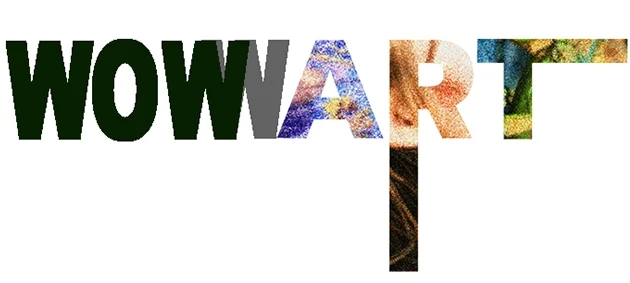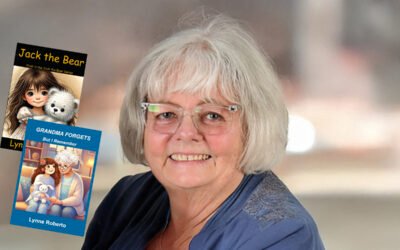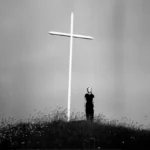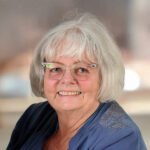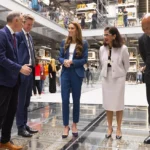Tyler Calkin Combines Art And Technology To Transform How We Experience Connection And Isolation

Photo: Tyler Calkin, innovative artist and educator, redefining human connection and interaction through immersive and interdisciplinary media.
Exploring Human Connection Through Virtual Worlds
Artist Tyler Calkin discusses blending VR, AR, and machine learning to explore social behaviors, pandemic-driven innovations, the role of play, cultural influences, and the intersection of art, technology, and education.
Tyler Calkin is a visionary artist whose works challenge the boundaries of technology, art, and human connection. In an era defined by screens, algorithms, and immersive realities, Calkin navigates the dynamic intersection of contemporary social behavior and emerging media with unparalleled creativity. His practice, steeped in a deep understanding of how technology shapes interpersonal experiences, has redefined the possibilities of interactive performance, virtual reality, augmented reality, and machine learning as vehicles for meaningful artistic exploration. Whether he’s analyzing the social isolation inherent in immersive technologies or uncovering the cultural nuances of personal space through performance, Calkin’s work resonates on both a personal and global scale.
A dedicated educator as well as an extraordinary artist, Calkin’s influence extends far beyond the gallery. From teaching at CalArts to leading Digital Media at the University of Nevada Reno, he has guided countless artists to engage critically with technology and its societal implications. His collaborations with professionals across disciplines—journalists, choreographers, engineers, and community members—demonstrate his commitment to breaking down barriers and fostering dialogue that transcends the studio. In a world grappling with rapid cultural and technological shifts, Calkin’s inventive integration of play, improvisation, and emerging media invites pause, reflection, and connection.
Tyler Calkin’s work is as playful as it is profound, as intimate as it is expansive. Whether he’s crafting AR memorials to honor loved ones lost to the pandemic or asking audiences to interact with machine-generated interpretations of social gestures, his creations continually blur the lines between the physical and the virtual while enriching the human experience. In this interview, WOWwART dives deep into the creative mind of Tyler Calkin, exploring the ideas, challenges, and impacts behind his exceptional practice. Prepare to be inspired by his ability to transform technology into a tool for empathy, curiosity, and cultural change.
Tyler Calkin masterfully fuses technology and art to inspire new social dialogues and reimagine the possibilities of human connection.
How do you select and combine different technologies, such as VR, AR, and machine learning, in your projects to explore social habits and anxieties?
I think a lot about feedback loops, mistranslations, and how data can remain intact but be made illegible. These ideas lead me to combine different technologies and processes. I might start with an embodied scenario, like two people meeting, then through motion capture and 3D modeling I will generate a digital form that others can then experience via VR and AR. At that point, especially with some of my social AR projects, users are asked to interact with the digital forms and with other people, which circles back to our social habits with digital devices. Machine learning is particularly useful in that I think of it as an interpretive mind, so by feeding an ML system my own work as data sets, I can get a misunderstanding of social events as filtered through technology, me, and its own training.
“I think a lot about feedback loops, mistranslations, and how data can remain intact but be made illegible.” – Tyler Calkin
Can you share how the pandemic influenced your approach to interactive and immersive art, particularly regarding themes of interpersonal experience?
The pandemic had a huge impact on my work and my approach to interactivity and immersion. I had been making work about close physical contact, and all of a sudden that was forbidden and dangerous. This put a magnified focus on augmented reality. Rather than exploring ephemeral visualizations as a metaphor for in-person social connection, AR was a replacement for physical contact. I started making AR effects that stood in for social gestures like shaking hands, thinking we could augment our way through our social rituals while we grieved physical touch and adapted to a new world.
Your work spans diverse locations and cultures. How do the places where you exhibit influence or shape your work?
Personal space is very different in different cultures. I did a performance in Korea and what I ended up developing was giving audience members very small 3D printed sculptures as gifts. I had a performance series that used hugs as an intimate and complicated social gesture, but I knew that I had been working within an American social context, and intuited right away that this would have radically different meaning in Korea.
I also recently worked on an international AR memorial for communities impacted by COVID, and this involved a very direct engagement with place; community members would share lost loved ones to be honored, and I would build them into a site specific memorial so their faces and personal messages could be experienced collectively by the people that miss them.
“The pandemic put a magnified focus on augmented reality as a replacement for physical contact.” – Tyler Calkin
In what ways do play and improvisation inform your creative process, and how do audiences typically respond to these elements in your work?
I use play and improvisation on both ends of the creative process; during making and during presentation.
While there is a playful aesthetic to my work, lately the playfulness has been something of a collaboration with computer systems. While I draw from real world data, I ask machine learning systems and AI tools to process and interpret the data using absurd parameters – I think of this as a kind of game.
Then I ask the viewer to behave playfully in some way, like moving their body with AR appendages. I like to set up interactive paradigms that don’t have goal orientation, so viewers find themselves improvising or responding to their own situation. This leaves the work open; some people are very playful and engage right away, some want to know the “correct” way to interact (there usually isn’t one). This participatory differences are as much a part of the work as the media that I create.
How does your role as an educator and Head of Digital Media impact your own artistic practice, particularly with emerging media and technology?
Being an educator, I am always developing new pedagogical ideas based on developments in emerging technologies. The process of learning has also always been close to my own artistic process, so teaching and making art very much inform one another. Keeping in close contact with younger generations of artists also helps me connect emerging tools to social trends and attitudes in a quickly shifting culture.
What are the primary challenges and rewards of working with interdisciplinary media, especially as it relates to examining contemporary social issues?
Taking a critical perspective toward emerging media requires diligence when technologies move as quickly as they do today. I’m interested in examining the impact of these media on social structures and issues, so I need to simultaneously hold enough distance to try and see a bigger picture, and also embed myself in these tools to experience how they work technically and socially. Isolation is an overwhelming social issue today, and I’ve been exploring the social isolation of immersive media since about 2016. Coupling this with forces like AI and online bots mean that many to most of our daily interactions might actually be with nonhumans. That’s a fascinating and challenging dynamic to make work about.

EDITOR’S NOTE
Tyler Calkin’s SinkCycle Vortex is a striking three-panel still from a looping animation that juxtaposes a luminous green form—a motion-capture trace of recycling gestures—against a turbulent, metallic ocean. The work poignantly critiques the futility of individual action amid the overwhelming climate crisis, with the sinking structure symbolizing both the Great Pacific Garbage Patch and the proverbial “sinking ship” of environmental collapse. The minimalist, surreal aesthetic—vivid green against reflective waves—heightens the tension between human effort and natural forces. A powerful visual metaphor for despair and inertia, it lingers as a haunting meditation on ecological futility.
